Headwaters of the Amargosa
Winter 2021
Conservation group protects waters of Nevada’s “invisible” river.
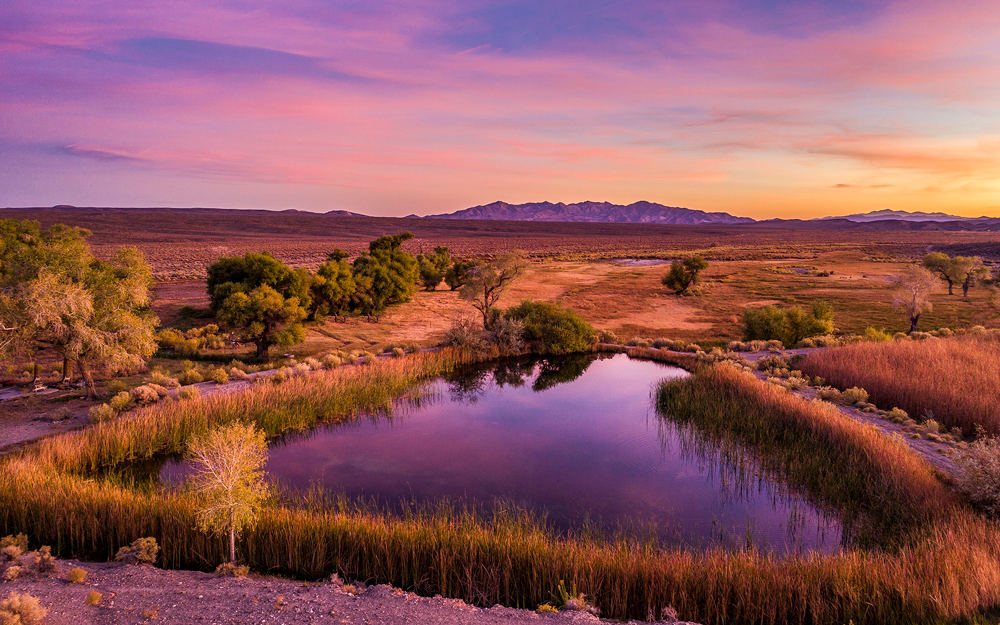
STORY & PHOTOS BY CHIP CARROON
 The Amargosa is one of the world’s longest underground rivers. For 185 miles, it flows largely unseen through parts of southern Nevada and southeastern California, except where it occasionally surfaces to create ecologically rich oases. The Amargosa River system comprises three major regions of isolated wetlands. The upper region (the headwaters) is the Oasis Valley, northeast of the town of Beatty. Ash Meadows National Wildlife Refuge and associated springs near the town of Amargosa Valley form the middle region of the Amargosa system. The lower region near the towns of Shoshone and Tecopa, California, is a free-flowing river.
The Amargosa is one of the world’s longest underground rivers. For 185 miles, it flows largely unseen through parts of southern Nevada and southeastern California, except where it occasionally surfaces to create ecologically rich oases. The Amargosa River system comprises three major regions of isolated wetlands. The upper region (the headwaters) is the Oasis Valley, northeast of the town of Beatty. Ash Meadows National Wildlife Refuge and associated springs near the town of Amargosa Valley form the middle region of the Amargosa system. The lower region near the towns of Shoshone and Tecopa, California, is a free-flowing river.
REMARKABLE WATERS
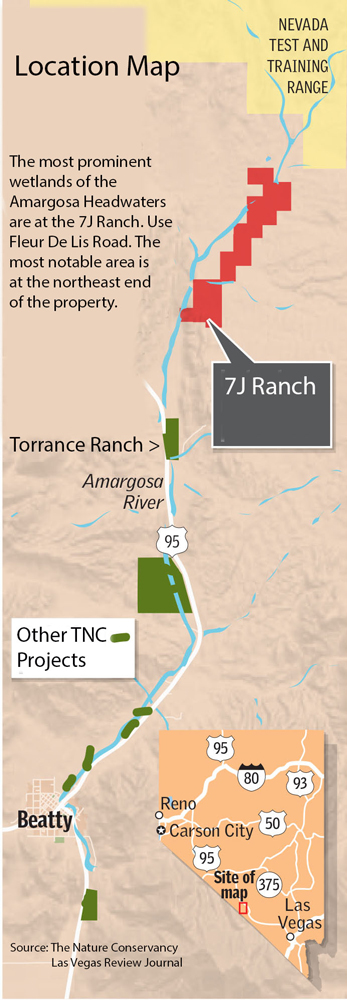 When the Amargosa River emerges aboveground, it creates oases harboring a remarkable diversity of life, including rare fish, plants, amphibians, and more than 250 species of resident and migratory birds. In fact, the highest concentration of endemic species anywhere in the U.S. is found along the middle region of the Amargosa River system, at Ash Meadows National Wildlife Refuge.
When the Amargosa River emerges aboveground, it creates oases harboring a remarkable diversity of life, including rare fish, plants, amphibians, and more than 250 species of resident and migratory birds. In fact, the highest concentration of endemic species anywhere in the U.S. is found along the middle region of the Amargosa River system, at Ash Meadows National Wildlife Refuge.
The Amargosa watershed originates in a large area of highlands within the Nevada Test and Training Range, located near the infamous Area 51. Subsurface water flows southwest through permeable alluvium for a distance before reaching impermeable clays in the upper Oasis Valley at the 7J Ranch near Beatty. The water rises to the surface for the first time as impressive springs that feed small lakes and other wetlands at this unusual property.
A nonprofit organization, The Nature Conservancy (TNC), purchased the 900-acre 7J Ranch in 2019.
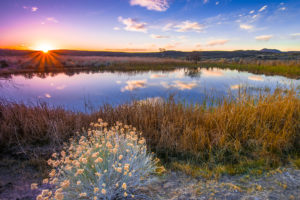 “The 7J Ranch’s unique position, where the Great Basin meets the Mojave Desert, and its importance as habitat for rare and endemic species, makes it a site of international significance for conservation of biodiversity,” explains TNC’s Southern Nevada Conservation Director John Zablocki. “The 7J is a link between land and water that sustains the ecology of a vast region far beyond the view of the ranch itself.”
“The 7J Ranch’s unique position, where the Great Basin meets the Mojave Desert, and its importance as habitat for rare and endemic species, makes it a site of international significance for conservation of biodiversity,” explains TNC’s Southern Nevada Conservation Director John Zablocki. “The 7J is a link between land and water that sustains the ecology of a vast region far beyond the view of the ranch itself.”
With TNC’s acquisition, the ranch’s land and water will continue to be available for migratory birds, waterfowl, coyote, bobcat, kit fox, pronghorn, mule deer, and more. The organization is partnering with other landowners to use the property to boost visitation and support economic development in the Oasis Valley.
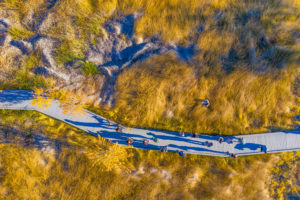
The ranch was purchased in order to protect the property’s exceptional ecological value. However, after a century of varied land uses, active restoration will be required, and improvements will be needed to address the pressures of a changing climate and the demands of a growing population along the Amargosa system. As an example, the organization intends to plant 30,000 trees along the Amargosa River in 2021.
Conserving the Amargosa will require new approaches, so TNC is creating the Conservation Innovation Center (CIC), a collaborative development where people of different organizations, disciplines, and backgrounds can learn from, teach, and inspire one another.
REMARKABLE PROJECTS
The 7J Ranch has existing facilities that can be converted to use as a work/research station, including a bunkhouse for hosting groups, buildings for lab space, a renovated ranch house, and an indoor space for hosting group meetings and presentations. TNC is in an ongoing relationship with University of Nevada, Las Vegas Landscape Architecture School students to develop design concepts for future amenities.
Closely downstream from the 7J, another headwaters restoration project has been completed at the Torrance Ranch Preserve, another TNC property. Efforts there have been successful in attracting local and migratory birds and in supporting native amphibians, fishes, and thriving native plant communities.
As natural communities recover and thrive at the 7J and Torrance preserves, they are becoming unique destinations in southern Nevada as places of natural beauty and diversity for animals and people alike.
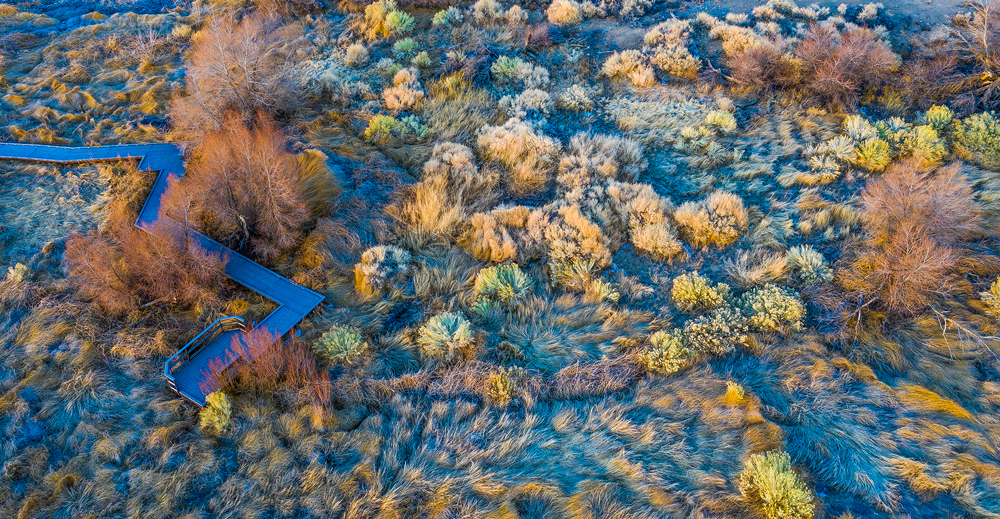
GETTING THERE
The headwaters of the Amargosa River are in Oasis Valley, in rural Nye County, northeast of Beatty, approximately a two-hour drive from downtown Las Vegas. A high-clearance vehicle may be needed for access to some parts of the area. The 7J Ranch is in the process of restoration and improvement so there are few accessible amenities currently. However, visitors are encouraged to take a walk on the wild side, and have a look at the unexpected and exceptional wetlands of the Amargosa Headwaters.

